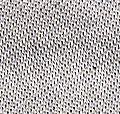Silicon(IV) oxide
silicon(IV) oxide, silicon dioxide or silicic anhydride (SiO2) is a compound of silicon and oxygen, commonly called silica. This spatially ordered compound in a three-dimensional network (crystallized) forms quartz and all its varieties. If it is in an amorphous state, it constitutes opal, which usually includes a high percentage of water, and flint. It is one of the components of the sand. It can also be found in a gaseous state, being a colorless gas, with a slightly irritating odor (like methane) and a somewhat acid taste (do not try, it is poisonous).
Uses
Silicon(IV) oxide is used, among other things, to make artificial glass, ceramics, and cement.
Silica gel is a desiccant, that is, it absorbs moisture from the place where it is located.
Silicon(IV) oxide is used as a catalyst in the process of creating sulfuric acid.
Gallery
Contenido relacionado
Crystallography
Ligand
Princess of Asturias Award for Scientific and Technical Research
Polyoxometalate
Miller and Urey experiment



